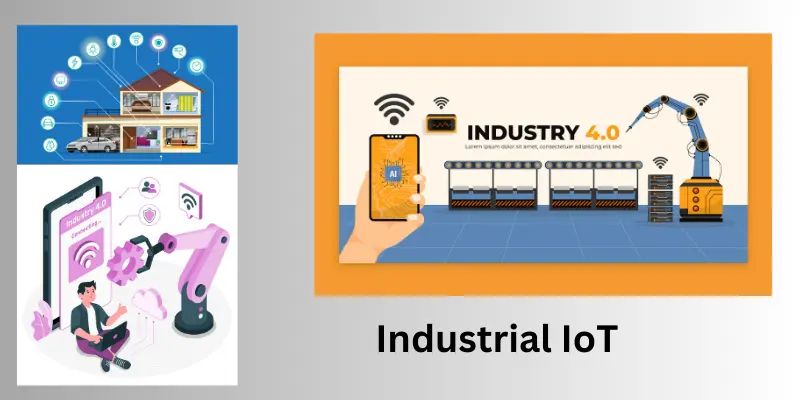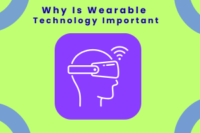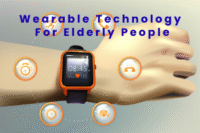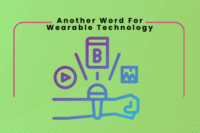What Are The Types of Internet of Things?
Published: 02 Feb 2025
The types of internet of things are changing the way we live, work, and use technology. From smart home devices like voice assistants to fitness trackers and industrial sensors, IoT connects everyday objects to the internet, making them smarter and more useful.
But did you know there are different types of IoT, each designed for specific tasks? Understanding these types can help you see how IoT is used in healthcare, transportation, and more. Whether you’re just getting started or curious about IoT, knowing how it works can help you see its real-world benefits in daily life.
Types of IoT
The Internet of Things (IoT) connects everyday devices to the internet, allowing them to communicate and share data. It is used in homes, businesses, healthcare, and industries to make life easier and more efficient. There are different types of IoT, each designed for specific tasks.

Here’s a list:
- Consumer IoT
- Commercial IoT
- Industrial IoT (IIoT)
- Infrastructure IoT
- Healthcare IoT
- Smart City IoT
- Agricultural IoT
- Retail IoT
- Transportation IoT
- Energy and Utilities IoT
Let’s learn about them in detail.
1. Consumer IoT
Overview
Consumer IoT (CIoT) refers to smart devices designed for everyday personal use. These devices connect to the internet and improve convenience, security, and entertainment in daily life. Examples include smartwatches, fitness trackers, and smart home devices like smart thermostats and voice assistants.
Key Features
- Connectivity – Devices connect through Wi-Fi, Bluetooth, or cellular networks.
- Automation – Smart features help automate daily tasks.
- User-Friendly Interfaces – Apps and voice controls make operation simple.
- Data Collection – Devices collect and analyze user data to improve performance.
- Integration – Works with other smart devices for a seamless experience.
Common Use Cases
- Smart Home Devices – Smart lights, thermostats, and security cameras.
- Wearable Technology – Smartwatches, fitness trackers, and smart glasses.
- Health Monitoring – Blood pressure monitors and sleep trackers.
- Entertainment Systems – Smart TVs and speakers.
Benefits
- Convenience – Automates tasks, saving time and effort.
- Improved Health Tracking – Helps users monitor fitness and health goals.
- Energy Efficiency – Smart thermostats and appliances reduce power consumption.
- Enhanced Security – Smart locks and cameras provide better home safety.
Challenges
- Privacy Concerns – Data collection raises security risks.
- High Costs – Some smart devices are expensive.
- Connectivity Issues – Requires a stable internet connection.
- Compatibility Problems – Not all devices work together seamlessly.
Future Potential
- Better AI Integration – More personalized automation and predictions.
- Stronger Security Measures – Improved data protection features.
- Wider Adoption – More homes will use IoT for daily convenience.
- 5G-Powered Devices – Faster and more reliable connectivity.
2. Commercial IoT
Overview
Commercial IoT (CIoT) refers to smart devices used in businesses and public services. These devices connect to the internet to improve efficiency, security, and customer experience. Examples include smart security systems, connected payment terminals, and smart HVAC systems in offices.
Key Features
- Remote Monitoring – Businesses can track operations in real time.
- Automation – Reduces manual work and increases efficiency.
- Data-Driven Insights – Devices collect data to improve decision-making.
- Connectivity – Uses Wi-Fi, Bluetooth, or cellular networks for communication.
- Scalability – Can be expanded as business needs grow.
Common Use Cases
- Smart Offices – Automated lighting, climate control, and security systems.
- Retail Industry – Smart checkout systems, inventory tracking, and customer analytics.
- Healthcare – Connected medical devices for patient monitoring.
- Hospitality – Smart hotel rooms with automated controls.
- Fleet Management – GPS tracking for delivery vehicles.
Benefits
- Increased Efficiency – Automates tasks and reduces human effort.
- Better Customer Experience – Personalization and faster service.
- Energy Savings – Smart lighting and HVAC systems reduce costs.
- Improved Security – Smart surveillance and access control systems.
- Real-Time Data Access – Helps businesses make informed decisions.
Challenges
- High Implementation Cost – Initial setup can be expensive.
- Data Security Risks – Cyber threats can compromise business data.
- Integration Issues – Some systems may not work well together.
- Internet Dependency – Requires stable connectivity for smooth operation.
Future Potential
- AI-Powered Automation – Smarter decision-making with AI integration.
- Enhanced Cybersecurity – Stronger protection against data breaches.
- 5G-Enabled IoT – Faster and more reliable connections.
- Wider Adoption – More businesses will integrate IoT for better performance.
Commercial IoT is transforming industries by making businesses smarter, safer, and more efficient.
3. Industrial IoT (IIoT):
Overview
Industrial IoT (IIoT) refers to smart devices used in factories, manufacturing plants, and other industrial settings. These devices collect and share data to improve efficiency, reduce costs, and enhance safety. Examples include smart sensors, connected machinery, and predictive maintenance systems.

Key Features
- Real-Time Monitoring – Tracks equipment and production in real time.
- Automation – Reduces manual work and increases productivity.
- Predictive Maintenance – Detects issues before machines break down.
- Big Data Analytics – Uses collected data to improve operations.
- High Connectivity – Devices communicate through Wi-Fi, 5G, or wired networks.
Common Use Cases
- Smart Manufacturing – Automated assembly lines and robotic systems.
- Energy Sector – Smart grids and connected power plants.
- Agriculture – IoT-enabled irrigation and soil monitoring.
- Supply Chain Management – Real-time tracking of goods and logistics.
- Oil and Gas Industry – Remote monitoring of pipelines and equipment.
Benefits
- Increased Productivity – Machines work efficiently with minimal downtime.
- Cost Savings – Reduces waste and lowers energy consumption.
- Improved Safety – Sensors detect hazards and prevent accidents.
- Better Decision-Making – Data insights help improve operations.
- Reduced Maintenance Costs – Predictive maintenance prevents expensive repairs.
Challenges
- High Setup Cost – Advanced technology requires a big investment.
- Cybersecurity Risks – Hackers can target industrial systems.
- Complex Integration – New IoT devices must work with old systems.
- Data Overload – Managing large amounts of data can be difficult.
Future Potential
- AI and Machine Learning – Smarter automation and decision-making.
- 5G-Powered Factories – Faster and more reliable IoT connections.
- Digital Twins – Virtual models of machines for better monitoring.
- Wider Adoption – More industries will use IIoT to improve efficiency.
Industrial IoT (IIoT) is transforming industries by making operations smarter, safer, and more efficient.
4. Infrastructure IoT
Overview
Infrastructure IoT refers to smart technology used in public services, cities, and large-scale infrastructure projects. It helps manage transportation, utilities, and construction by using connected sensors and automated systems. Examples include smart streetlights, connected bridges, and intelligent traffic management.
Key Features
- Smart Monitoring – Tracks real-time data on roads, bridges, and utilities.
- Automation – Reduces human effort in managing infrastructure.
- Predictive Maintenance – Detects issues before major failures occur.
- Energy Efficiency – Optimizes power and water usage.
- High Connectivity – Uses Wi-Fi, 5G, or fiber-optic networks for communication.
Common Use Cases
- Smart Cities – Intelligent lighting, traffic control, and waste management.
- Connected Transportation – IoT-enabled roads, bridges, and tunnels.
- Water Management – Smart sensors for leak detection and water quality monitoring.
- Energy Grids – Automated power distribution and smart meters.
- Public Safety – IoT-based surveillance and emergency response systems.
Benefits
- Better Public Services – Improves city management and infrastructure maintenance.
- Cost Savings – Reduces maintenance costs by preventing breakdowns.
- Environmental Impact – Cuts energy waste and reduces carbon emissions.
- Improved Safety – Sensors detect problems before they cause accidents.
- Efficient Traffic Flow – Smart traffic lights and monitoring reduce congestion.
Challenges
- High Setup Cost – Upgrading cities and infrastructure requires a big investment.
- Cybersecurity Risks – Public networks can be vulnerable to hacking.
- Integration Issues – Old infrastructure may not support new IoT technology.
- Data Management – Handling large amounts of data can be difficult.
Future Potential
- AI-Powered Cities – Smarter automation for urban development.
- 5G-Enabled Infrastructure – Faster and more connected public services.
- Digital Twins – Virtual models of infrastructure for better planning.
- Increased Adoption – More cities and governments will use Infrastructure IoT to improve daily life.
Infrastructure IoT is making cities and public services smarter, safer, and more efficient.
5. Healthcare IoT
Overview
Healthcare IoT refers to smart medical devices and systems that connect to the internet to improve patient care. It includes wearable health trackers, remote monitoring devices, and smart hospital equipment. These technologies help doctors track patient health in real time, automate medical processes, and improve overall healthcare services.
Key Features
- Remote Monitoring – Tracks patient health outside hospitals.
- Automated Alerts – Notifies doctors of emergencies.
- Smart Wearables – Devices that measure heart rate, oxygen levels, and activity.
- Connected Medical Equipment – Smart beds, infusion pumps, and imaging machines.
- Secure Data Sharing – Cloud-based storage for patient records.
Common Use Cases
- Wearable Health Devices – Smartwatches and fitness trackers for monitoring heart rate and activity.
- Smart Hospitals – IoT-enabled medical devices for better patient care.
- Remote Patient Monitoring (RPM) – Sensors that track patient vitals at home.
- Medication Management – Smart pill dispensers that remind patients to take medicine.
- Telemedicine – Virtual doctor consultations with real-time health data.
Benefits
- Faster Diagnoses – Real-time health tracking helps detect issues early.
- Better Patient Care – Doctors get instant updates on patient health.
- Cost Savings – Reduces hospital visits and medical costs.
- Improved Efficiency – Automates routine healthcare tasks.
- Increased Patient Engagement – Patients can monitor their own health easily.
Challenges
- Privacy and Security Risks – Protecting sensitive health data is critical.
- High Implementation Costs – Smart medical devices can be expensive.
- Device Compatibility – Different systems may not work well together.
- Data Overload – Managing large amounts of patient data can be difficult.
Future Potential
- AI-Powered Healthcare – Smarter disease detection and personalized treatments.
- 5G-Enabled Devices – Faster and more reliable real-time monitoring.
- Robotic Surgery – IoT-connected robots assisting doctors in surgery.
- Expanded Remote Care – More patients will receive treatment from home using Healthcare IoT.
Healthcare IoT is transforming medical care by making it smarter, faster, and more accessible. For more detail about IoT medical applications, click here.
6. Smart City IoT
Overview
Smart City IoT refers to the use of internet-connected devices and sensors to improve urban life. Cities use this technology to manage traffic, reduce energy waste, improve public safety, and enhance overall efficiency. It helps make cities more livable, sustainable, and safer for residents.
Key Features
- Smart Traffic Management – IoT sensors adjust traffic lights to reduce congestion.
- Energy-Efficient Streetlights – Lights turn on and off based on movement.
- Waste Management – Smart bins send alerts when they need collection.
- Public Safety Systems – IoT-powered surveillance and emergency response.
- Connected Public Transport – Real-time updates for buses and trains.
Common Use Cases
- Smart Traffic Lights – Reduce waiting times and improve road safety.
- Air Quality Monitoring – Sensors track pollution levels in real time.
- Smart Parking – Drivers find available parking spaces through apps.
- Water Management – IoT sensors detect leaks and optimize water usage.
- Disaster Response – Early warning systems for floods, earthquakes, and fires.
Benefits
- Less Traffic Congestion – Smart systems improve road flow.
- Lower Energy Costs – IoT-powered solutions reduce electricity waste.
- Better Public Safety – Faster response to emergencies.
- Environmental Protection – Smart monitoring helps reduce pollution.
- Improved City Services – Efficient management of waste, water, and transport.
Challenges
- High Implementation Costs – Upgrading city infrastructure is expensive.
- Cybersecurity Risks – IoT systems must be protected from hacking.
- Data Privacy Concerns – Collecting and storing public data securely is a challenge.
- Integration Issues – Different IoT systems need to work together smoothly.
Future Potential
- AI-Driven Traffic Control – Smarter predictions to prevent congestion.
- 5G-Powered Cities – Faster and more reliable IoT connections.
- Autonomous Public Transport – Self-driving buses and trains for efficiency.
- Smart Grid Technology – Better energy management to reduce costs and waste.
Smart City IoT is shaping the future of urban living, making cities more efficient, eco-friendly, and safe for everyone.
7. Agricultural IoT
Overview
Agricultural IoT uses smart devices, sensors, and data analytics to improve farming. It helps farmers monitor crops, manage livestock, and use water efficiently. With IoT, agriculture becomes more productive, cost-effective, and sustainable.
Key Features
- Precision Farming – Sensors provide real-time data on soil, weather, and crops.
- Automated Irrigation – Smart systems water crops only when needed.
- Livestock Monitoring – Wearable devices track animal health and location.
- Drone Technology – Drones scan fields and spray fertilizers.
- Supply Chain Tracking – IoT ensures food safety and quality during transport.
Common Use Cases
- Soil Moisture Sensors – Help prevent overwatering or underwatering crops.
- Smart Greenhouses – Automated climate control for better plant growth.
- Livestock Health Tracking – IoT wearables detect diseases early.
- Pest Control Monitoring – Smart traps alert farmers about pest activity.
- Weather Prediction Tools – Help farmers plan for extreme weather conditions.
Benefits
- Higher Crop Yields – Farmers get more produce with smart monitoring.
- Lower Costs – Reduces water, fertilizer, and labor expenses.
- Better Livestock Health – Early disease detection prevents losses.
- Less Environmental Impact – Optimized resource use reduces waste.
- Improved Food Quality – Monitored conditions lead to healthier crops.
Challenges
- High Setup Costs – Smart farming technology can be expensive.
- Connectivity Issues – Rural areas may lack strong internet coverage.
- Data Security Risks – Farm data needs protection from cyber threats.
- Technical Knowledge Required – Farmers must learn to use IoT tools.
Future Potential
- AI-Powered Farming – Smart predictions for better crop management.
- 5G Connectivity – Faster data transfer for real-time farm monitoring.
- Autonomous Tractors – Self-driving machines for planting and harvesting.
- Vertical Farming Growth – IoT helps optimize indoor and urban farming.
Agricultural IoT is transforming farming, making it smarter, more efficient, and more sustainable for the future.
8. Retail IoT
Overview
Retail IoT uses smart devices, sensors, and real-time data to improve shopping experiences, inventory management, and store operations. It helps retailers track products, automate checkouts, and personalize customer service.
Key Features
- Smart Shelves – Sensors track product availability and send alerts when stock is low.
- Automated Checkouts – RFID and cameras enable cashless, queue-free shopping.
- Personalized Marketing – IoT analyzes customer data to offer tailored promotions.
- Supply Chain Tracking – Monitors products from warehouse to store.
- Energy Management – Smart lighting and climate control save energy.
Common Use Cases
- RFID Tags for Inventory – Stores track product movement in real time.
- Beacons for Personalized Offers – Customers receive in-store mobile discounts.
- Smart Vending Machines – Machines restock automatically when items run out.
- Automated Store Analytics – Cameras and sensors study shopping behavior.
- Voice Assistants for Shopping – Customers use smart assistants to order products.
Benefits
- Better Shopping Experience – Faster checkouts and personalized offers.
- Efficient Inventory Management – Reduces stock shortages and overstocking.
- Increased Sales – Smart recommendations boost purchases.
- Lower Operational Costs – Automates tasks to save time and money.
- Improved Security – IoT cameras and sensors prevent theft.
Challenges
- High Initial Costs – Advanced IoT systems can be expensive to install.
- Data Privacy Issues – Customer data needs strong protection.
- Connectivity Problems – Stores need strong internet coverage.
- Integration with Legacy Systems – Old retail systems may not support IoT.
Future Potential
- AI-Powered Shopping Assistants – Smart bots help customers find products.
- Fully Automated Stores – No staff, only sensors and AI-powered checkouts.
- Blockchain for Supply Chains – Ensures transparent product tracking.
- Smart Fitting Rooms – Virtual mirrors suggest outfits based on preferences.
Retail IoT is transforming the shopping industry, making it more efficient, convenient, and personalized for both customers and retailers.
9. Transportation IoT
Overview
Transportation IoT connects vehicles, roads, and logistics systems using smart sensors, GPS, and real-time data. It helps improve traffic flow, vehicle safety, and fleet management. IoT makes travel safer, reduces delays, and increases efficiency in transportation networks.
Key Features
- Smart Traffic Management – Sensors and cameras control traffic signals.
- Real-Time Vehicle Tracking – GPS monitors location and movement.
- Predictive Maintenance – IoT detects vehicle issues before they cause breakdowns.
- Autonomous Vehicles – IoT helps self-driving cars make quick decisions.
- Connected Public Transport – Buses and trains update passengers in real time.
Common Use Cases
- Fleet Management for Trucks – Tracks fuel use, routes, and driver behavior.
- Smart Parking Systems – Sensors detect empty parking spaces and guide drivers.
- Toll Collection Automation – RFID and cameras enable cashless toll payments.
- Traffic Congestion Alerts – IoT provides live traffic updates to drivers.
- Ride-Sharing Optimization – Smart data improves matching between drivers and riders.
Benefits
- Reduced Traffic Congestion – Smart signals adjust to real-time traffic.
- Lower Fuel Consumption – Optimized routes save fuel and money.
- Safer Roads – IoT warns drivers about hazards and accidents.
- Better Public Transport – Passengers get live arrival times and seat availability.
- Cost Savings for Businesses – Fleet tracking reduces delays and fuel waste.
Challenges
- High Implementation Costs – Setting up smart systems requires investment.
- Data Security Risks – Hackers can target connected vehicles.
- Dependence on Connectivity – Poor networks can disrupt IoT operations.
- Regulatory Issues – Different regions have different traffic laws for IoT.
Future Potential
- Self-Driving Public Transport – AI-powered buses and taxis with no drivers.
- Smart Roads – Roads with sensors that communicate with vehicles.
- Hyperloop and High-Speed Travel – IoT will monitor and optimize ultra-fast transport.
- Drone Deliveries – Smart drones will deliver goods in minutes.
Transportation IoT is changing how people and goods move, making travel safer, faster, and more efficient.
10. Energy and Utilities IoT
Overview
Energy and Utilities IoT connects smart sensors, meters, and grids to improve energy distribution and usage. It helps reduce waste, lower costs, and improve efficiency. IoT makes power plants, water systems, and gas utilities smarter and more reliable.
Key Features
- Smart Meters – Track energy and water usage in real time.
- Grid Automation – IoT controls power distribution to avoid outages.
- Remote Monitoring – Sensors track pipelines, transformers, and power plants.
- Renewable Energy Integration – IoT helps manage solar and wind energy.
- Predictive Maintenance – Detects issues in power lines and utilities before failures happen.
Common Use Cases
- Smart Electricity Grids – Automatically balance power supply and demand.
- Water Management – IoT monitors leaks and prevents water waste.
- Gas Pipeline Monitoring – Sensors detect leaks and ensure safety.
- Solar and Wind Energy Optimization – Smart systems manage renewable power sources.
- Smart Home Energy Management – IoT devices reduce electricity usage in homes.
Benefits
- Lower Energy Costs – Smart meters help users save on bills.
- Reduced Power Outages – IoT detects and fixes issues quickly.
- Better Resource Management – Less waste of water, gas, and electricity.
- Safer Infrastructure – Sensors prevent leaks and hazards.
- Sustainable Energy Use – IoT helps increase the use of clean energy.
Challenges
- High Setup Costs – Upgrading old utility systems is expensive.
- Cybersecurity Risks – Hackers may target smart grids.
- Data Management Issues – Handling massive data from sensors can be complex.
- Regulatory Challenges – Different countries have different energy laws.
Future Potential
- AI-Powered Smart Grids – Automates power distribution for maximum efficiency.
- Wireless Energy Monitoring – IoT will track usage without physical meters.
- Smart Water Recycling – IoT will improve water reuse and conservation.
- Carbon Footprint Tracking – Helps industries and homes reduce pollution.
Energy and Utilities IoT is making power, water, and gas systems smarter, reducing waste, and ensuring a more sustainable future.
When people ask, what are the best types of Internet of Things? Industrial IoT (IIoT) stands out as the best. It helps factories, energy plants, and warehouses work smarter and faster. Machines can talk to each other, predict problems, and fix issues before they happen. This saves time, money, and effort. IIoT also makes workplaces safer and improves production quality. If you want IoT that truly makes a difference, Industrial IoT is the best choice!
| Conclusion |
|---|
|
The types of Internet of Things offer endless possibilities, each designed to serve different needs. Whether you are interested in smart home devices, industrial automation, or healthcare solutions, there is an IoT type for you. Exploring these options can help you find the best fit for your business or personal needs. As IoT continues to evolve, staying informed will help you make smarter choices and take full advantage of its benefits. So, take the time to explore these IoT types and see how they can improve your life! |
FAQs
There are several types of IoT, including Consumer IoT, Industrial IoT, Healthcare IoT, Smart City IoT, and Agricultural IoT. Each type serves a specific purpose, like improving daily life, automating industries, or making cities smarter. Understanding these types helps in choosing the right IoT solutions for different needs.
IoT in education includes smart boards for interactive learning, RFID-based attendance systems, and connected classroom devices for real-time collaboration. Wearable devices track student health, while AI-powered learning platforms personalize education. These technologies improve engagement, efficiency, and safety in schools.
Some examples of the Internet of Things (IoT) include smart home devices like thermostats and security cameras, wearable fitness trackers, and smart traffic systems in cities. In healthcare, IoT is used for remote patient monitoring, while industries use it for machine automation. These technologies make life easier and more efficient.
Devices used in the Internet of Things (IoT) include smart home gadgets like thermostats and security cameras, wearables like fitness trackers, and industrial sensors for automation. Other examples are healthcare devices for patient monitoring and smart city technologies like traffic sensors. These devices connect to the internet to collect and share data.

- Be Respectful
- Stay Relevant
- Stay Positive
- True Feedback
- Encourage Discussion
- Avoid Spamming
- No Fake News
- Don't Copy-Paste
- No Personal Attacks

- Be Respectful
- Stay Relevant
- Stay Positive
- True Feedback
- Encourage Discussion
- Avoid Spamming
- No Fake News
- Don't Copy-Paste
- No Personal Attacks



